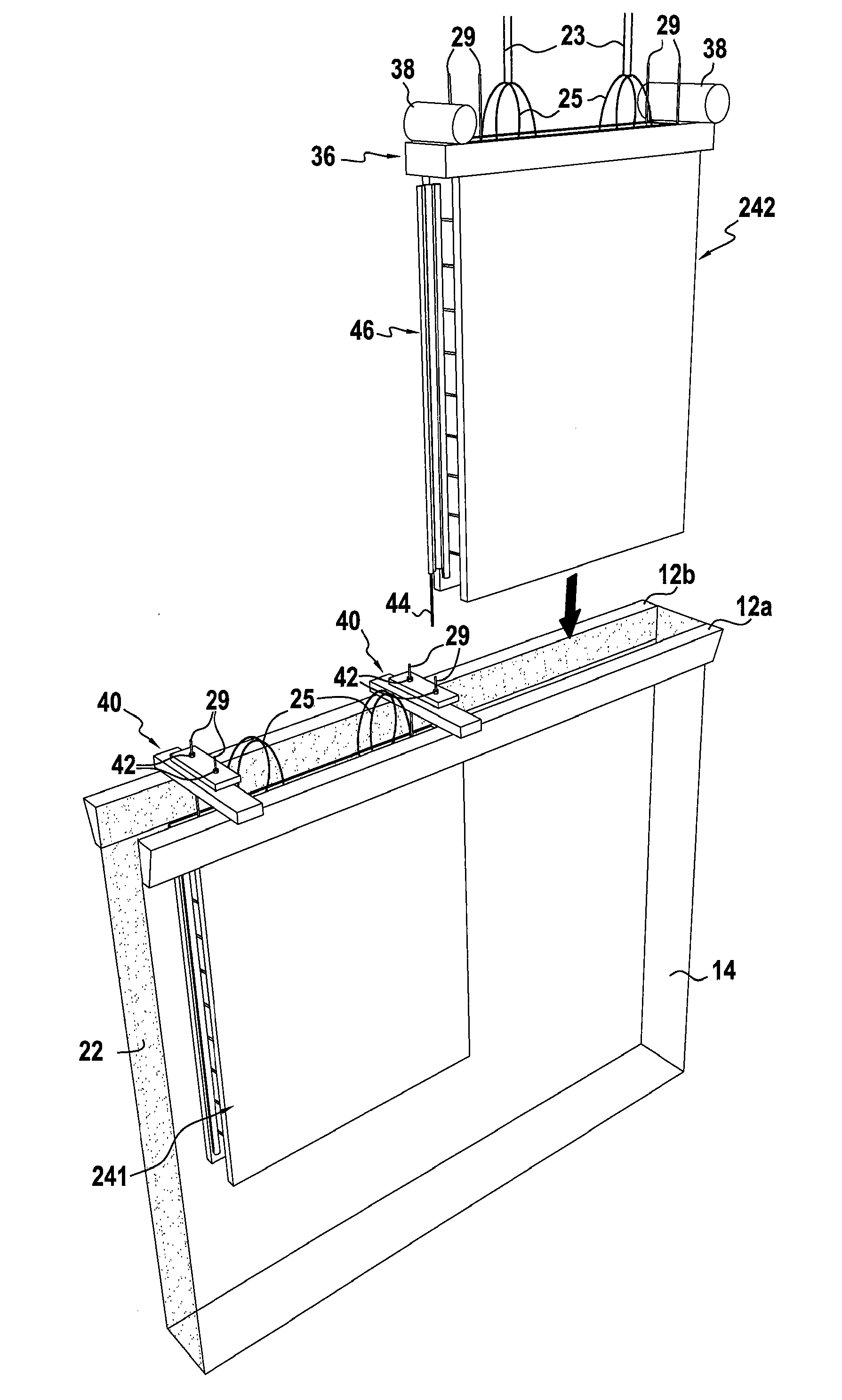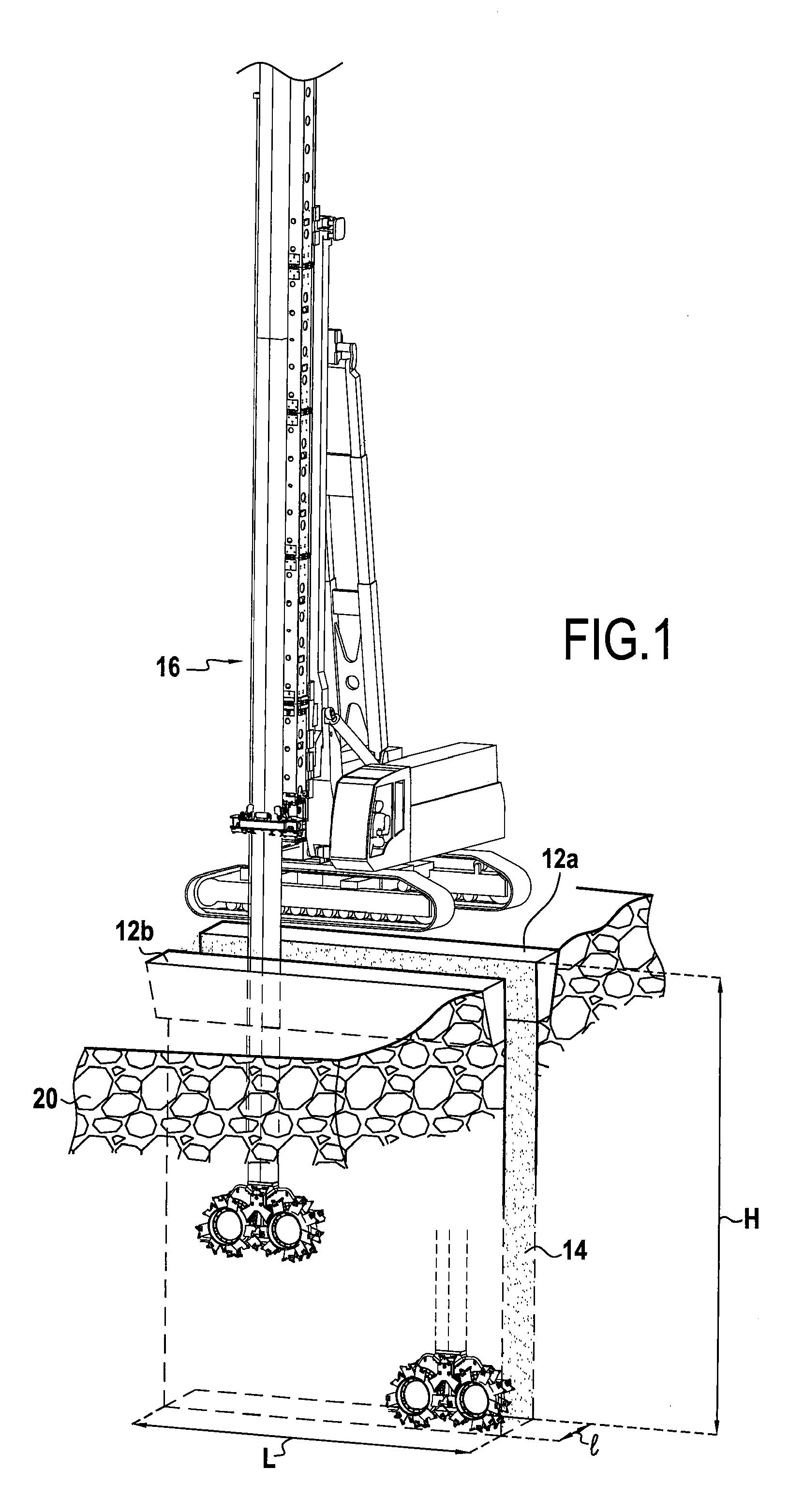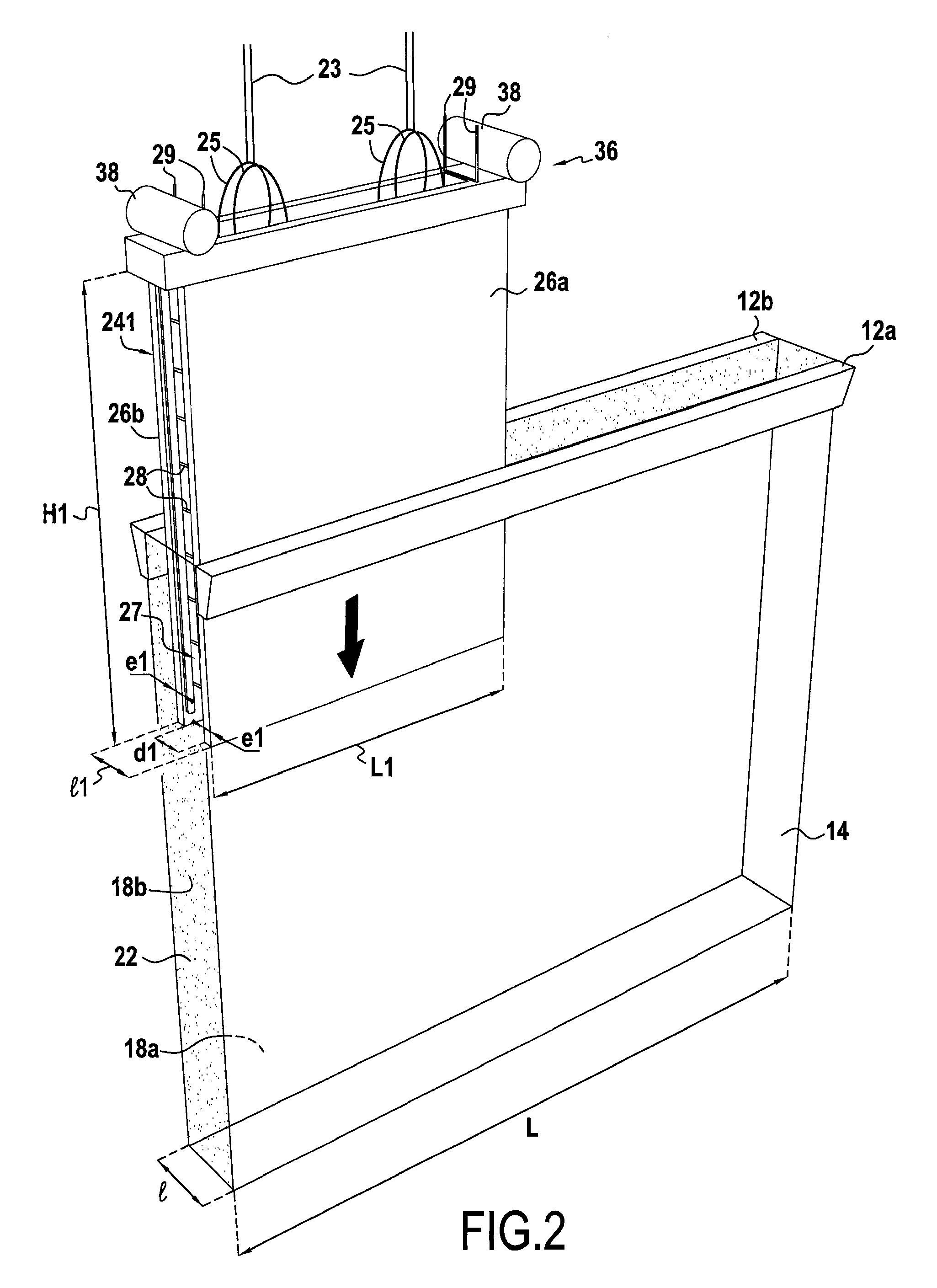Wall formed in soil, the wall including a hollow prefabricated element, and a method of making such a wall
a prefabricated element and wall technology, applied in the field of special works in soil, can solve the problems of long transportation of prefabricated elements from the fabrication workshop to the site, long transportation of prefabricated elements, and inability to meet the needs of the soil, and achieve the effect of facilitating self-hardening materials
- Summary
- Abstract
- Description
- Claims
- Application Information
AI Technical Summary
Benefits of technology
Problems solved by technology
Method used
Image
Examples
Embodiment Construction
[0052]The prefabricated walls are made conventionally out of individual panels, either in succession or in alternation.
[0053]With reference to FIGS. 1 to 9, there follows a description of how a wall 10 of the invention is made using successive panels. All of the techniques described are naturally applicable to make a wall using alternating panels, or indeed making a wall that is constituted by a single individual panel.
[0054]A first step of the method, shown in FIG. 1, consists in making low guide walls 12a, 12b serving to mark the location of the future wall 10. In the example, two mutually parallel low guide walls 12a and 12b define a space of constant width l corresponding substantially to the width desired for the future wall. These low guide walls 12a, 12b are generally made of reinforced concrete and they present a height lying in the range about 0.5 meters (m) to about 1.50 m. Their function is to ensure stability of surface ground, constituting leveling markers, and serving ...
PUM
 Login to View More
Login to View More Abstract
Description
Claims
Application Information
 Login to View More
Login to View More - R&D
- Intellectual Property
- Life Sciences
- Materials
- Tech Scout
- Unparalleled Data Quality
- Higher Quality Content
- 60% Fewer Hallucinations
Browse by: Latest US Patents, China's latest patents, Technical Efficacy Thesaurus, Application Domain, Technology Topic, Popular Technical Reports.
© 2025 PatSnap. All rights reserved.Legal|Privacy policy|Modern Slavery Act Transparency Statement|Sitemap|About US| Contact US: help@patsnap.com



